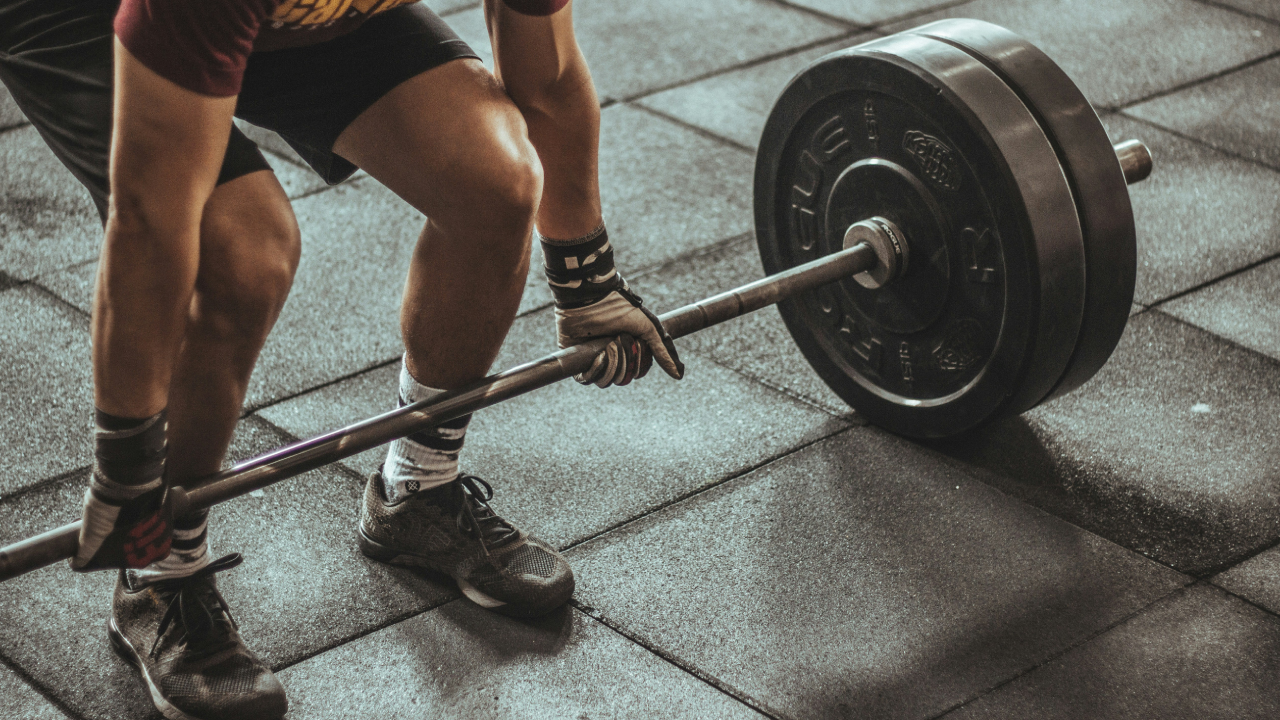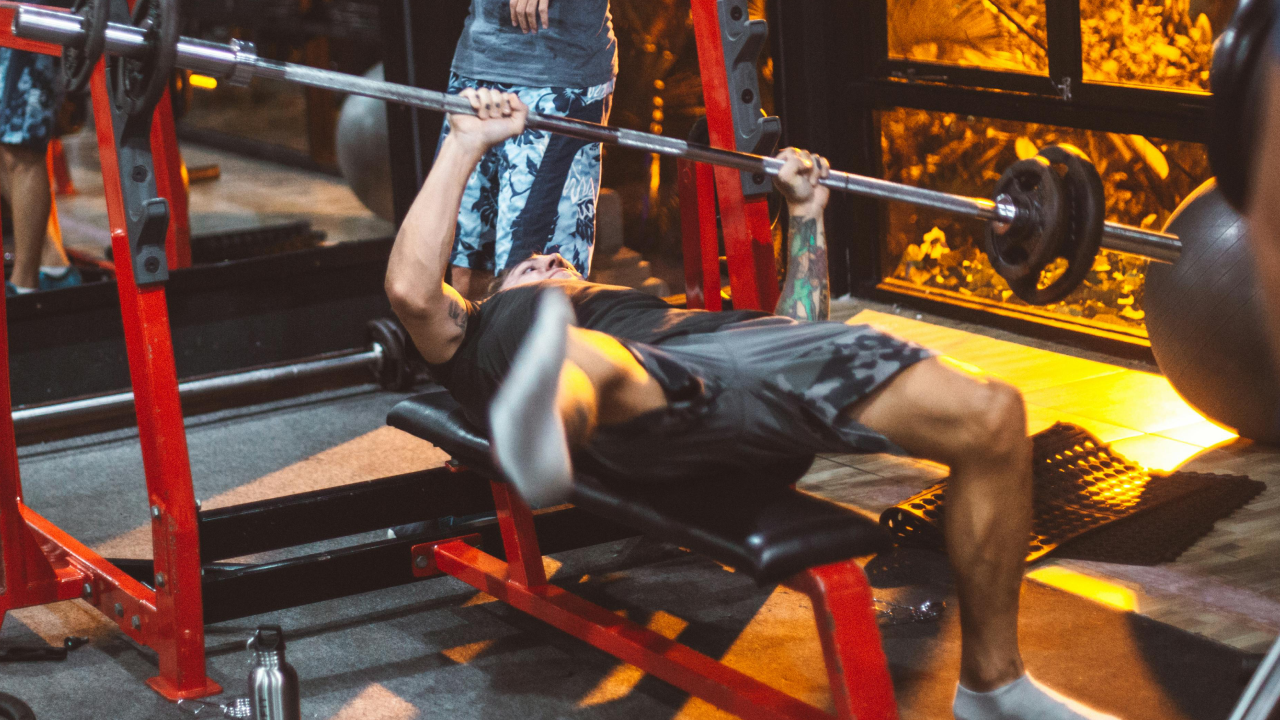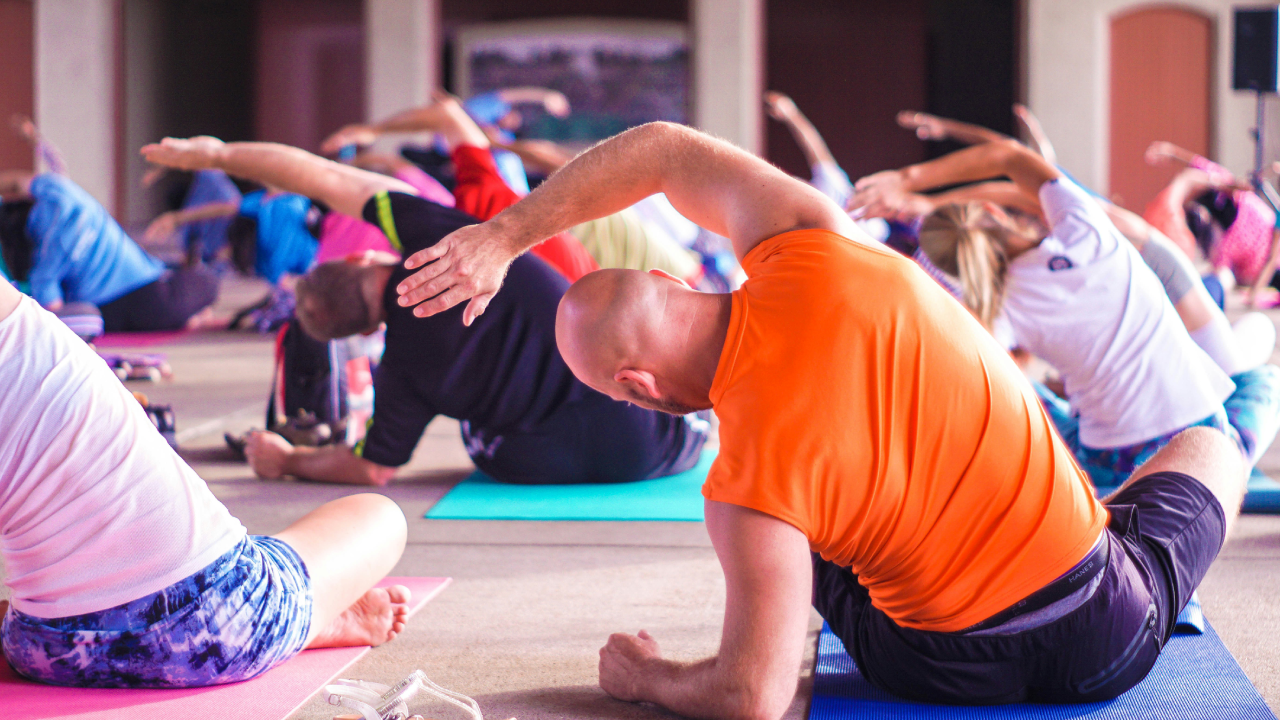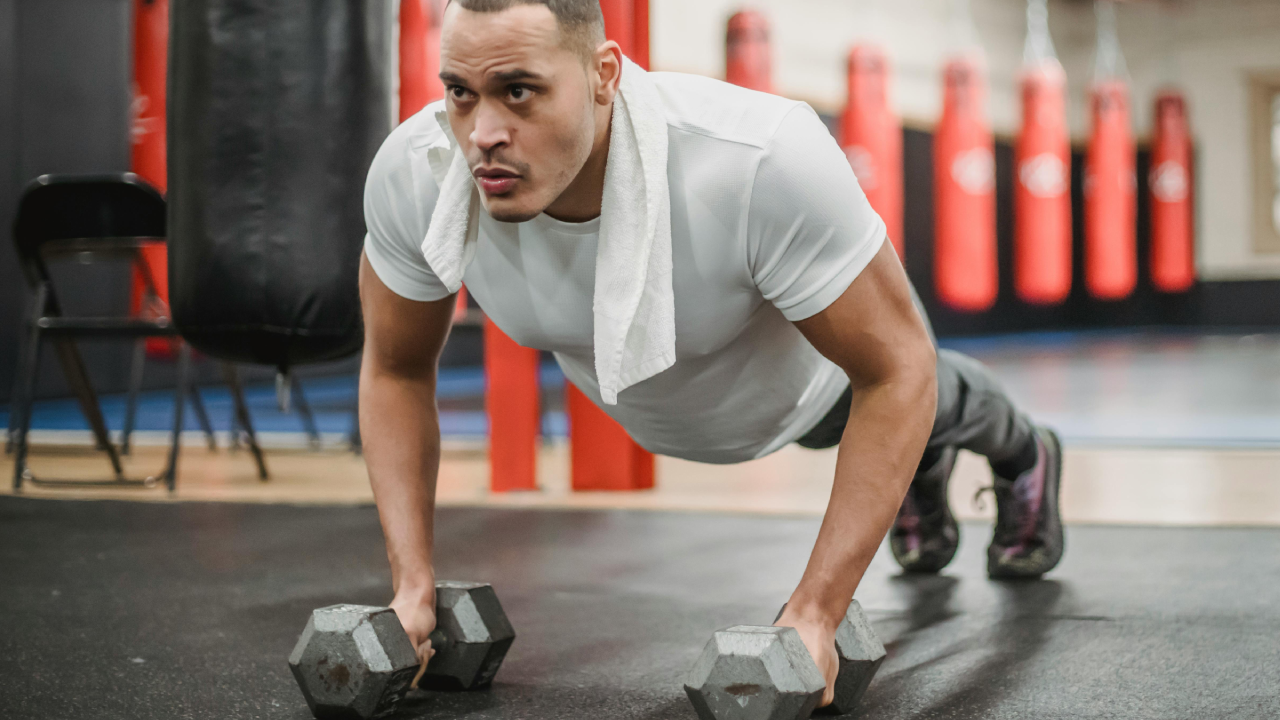In the world of fitness, one question has remained a subject of endless debate: is it better to focus on lifting heavy weights, or should you dedicate your time to aerobics? Both have their proponents and detractors, each arguing that their preferred method is the key to achieving optimal health, fitness, and longevity.
Science, benefits, and potential drawbacks of both heavy weightlifting and aerobic exercises to help you make an informed decision on what might work best for your fitness goals.

Table of Contents
The Benefits of Heavy Weightlifting
Heavy weightlifting, often associated with strength training, involves lifting substantial amounts of weight with fewer repetitions. This form of exercise is designed to increase muscle mass, improve strength, and boost overall physical performance.
1. Muscle Growth and Strength Gains
One of the primary benefits of heavy weightlifting is muscle hypertrophy—the increase in muscle size. When you lift heavy weights, your muscles are subjected to greater stress than they experience in daily activities. This stress causes microscopic tears in the muscle fibers, which then repair and grow stronger and larger during recovery.
Strength gains are another significant benefit. Lifting heavy weights trains your muscles to exert force more efficiently, leading to increased strength. Over time, this can translate to improved performance in various physical activities, from sports to everyday tasks like lifting groceries or carrying heavy objects.
2. Enhanced Metabolic Rate
Muscle tissue is metabolically active, meaning it requires energy to maintain itself. The more muscle mass you have, the higher your resting metabolic rate (RMR). This means that even when you’re not working out, your body burns more calories, which can be beneficial for weight management.
Additionally, the process of muscle repair after weightlifting requires energy, further increasing calorie expenditure in the hours and days following a heavy lifting session. This phenomenon, known as the “afterburn effect” or excess post-exercise oxygen consumption (EPOC), can contribute to fat loss and improved body composition.
3. Bone Density Improvement
As we age, bone density naturally decreases, leading to conditions like osteoporosis. Heavy weightlifting places stress on the bones, which stimulates bone-forming cells and increases bone density. This is particularly important for older adults and postmenopausal women, who are at a higher risk of bone-related issues.
4. Hormonal Benefits
Lifting heavy weights can also have positive effects on hormone levels. For instance, it has been shown to increase the production of testosterone and growth hormone, both of which play crucial roles in muscle growth, fat loss, and overall vitality. These hormonal changes can also improve mood, energy levels, and cognitive function.
5. Functional Fitness
Heavy weightlifting often involves compound movements—exercises that engage multiple muscle groups at once, such as squats, deadlifts, and bench presses. These exercises not only build strength but also improve coordination, balance, and overall functional fitness. This means that the strength and skills you develop in the gym can translate into improved performance in real-world activities.
6. Body Composition
One of the most noticeable effects of heavy weightlifting is the change in body composition. As you build muscle, your body becomes more toned and defined. Unlike aerobic exercise, which primarily burns calories during the workout, weightlifting can lead to long-term changes in how your body looks and feels.

The Drawbacks of Heavy Weightlifting
While heavy weightlifting has numerous benefits, it’s not without its potential drawbacks, especially if not done correctly or if it’s the sole focus of your fitness routine.
1. Risk of Injury
One of the most significant concerns with heavy weightlifting is the risk of injury. Lifting heavy weights, especially with improper form or without adequate preparation, can lead to injuries such as muscle strains, joint damage, or even more severe issues like herniated discs.
Injuries are more likely to occur when lifters push themselves too hard, too fast, or without sufficient recovery time between sessions. Proper technique, gradual progression, and listening to your body are crucial to minimizing these risks.
2. Overtraining and Fatigue
Heavy weightlifting places substantial stress on the muscles and the central nervous system. Without adequate rest and recovery, this can lead to overtraining, which manifests as fatigue, decreased performance, and increased susceptibility to injuries. Overtraining can also negatively impact mental health, leading to burnout, irritability, and lack of motivation.
3. Limited Cardiovascular Benefits
While weightlifting can improve certain aspects of cardiovascular health, such as blood pressure and heart rate, it does not offer the same cardiovascular conditioning as aerobic exercises. Heavy weightlifting alone may not be sufficient to improve endurance, lung capacity, or overall cardiovascular fitness, which are essential components of a well-rounded fitness regimen.
4. Equipment and Accessibility
Engaging in heavy weightlifting often requires access to a gym with the appropriate equipment, such as barbells, dumbbells, and weight machines. For some individuals, this can be a barrier to consistent training, especially if they live in areas without nearby gym facilities or if they cannot afford a gym membership.

The Benefits of Aerobic Exercise
Aerobic exercise, also known as cardio, involves sustained, rhythmic activities that elevate the heart rate and increase oxygen consumption. Common examples include running, cycling, swimming, and dancing. Aerobic exercise is primarily associated with improving cardiovascular health and endurance.
1. Cardiovascular Health
One of the most well-documented benefits of aerobic exercise is its positive impact on cardiovascular health. Regular aerobic activity strengthens the heart muscle, improves circulation, and helps maintain healthy blood pressure levels. It also increases the efficiency with which the body uses oxygen, which is crucial for overall health and well-being.
Aerobic exercise has been shown to reduce the risk of cardiovascular diseases, such as heart attacks, strokes, and hypertension. It can also help manage existing conditions by improving the body’s ability to regulate blood sugar and cholesterol levels.
2. Weight Management
Aerobic exercise is highly effective for burning calories, making it a valuable tool for weight management. Engaging in regular cardio can help you create a caloric deficit, which is necessary for weight loss. Additionally, aerobic exercise helps prevent weight regain by boosting metabolism and improving the body’s ability to use fat as an energy source.
3. Mental Health and Cognitive Function
Aerobic exercise has a profound impact on mental health. It promotes the release of endorphins, which are chemicals in the brain that act as natural painkillers and mood elevators. This can help reduce symptoms of depression, anxiety, and stress.
Moreover, aerobic exercise has been linked to improved cognitive function and a reduced risk of cognitive decline with age. Studies have shown that regular aerobic activity can enhance memory, attention, and problem-solving skills.
4. Increased Stamina and Endurance
Aerobic exercise is the cornerstone of building stamina and endurance. Regular cardio sessions increase the body’s ability to sustain prolonged physical activity, which can be beneficial for daily life and athletic performance. Improved endurance can make everyday tasks, such as climbing stairs or carrying groceries, easier and less tiring.
5. Longevity
Numerous studies have found a strong correlation between regular aerobic exercise and increased lifespan. Engaging in activities that keep the heart and lungs healthy can significantly reduce the risk of premature death from various causes, including heart disease, stroke, diabetes, and certain cancers.
6. Versatility and Accessibility
Aerobic exercise can be performed virtually anywhere, with minimal equipment. Whether you prefer to run in the park, swim at the local pool, or take a brisk walk around your neighborhood, there are countless ways to incorporate aerobic activity into your routine. This versatility makes it an accessible option for people of all fitness levels and backgrounds.

The Drawbacks of Aerobic Exercise
While aerobic exercise offers numerous health benefits, it also has its limitations and potential downsides.
1. Risk of Overuse Injuries
Repetitive aerobic activities, especially high-impact exercises like running, can lead to overuse injuries. Common issues include shin splints, stress fractures, tendonitis, and joint pain. These injuries can result from excessive training volume, improper technique, or inadequate recovery.
To minimize the risk of overuse injuries, it’s important to vary your aerobic activities, use proper footwear, and listen to your body’s signals. Incorporating strength training and flexibility exercises can also help maintain a balanced and injury-resistant body.
2. Muscle Loss
While aerobic exercise is excellent for cardiovascular health and calorie burning, it may not be the best for maintaining or building muscle mass. In fact, excessive cardio, particularly in combination with a calorie-restricted diet, can lead to muscle loss. This can result in a decrease in strength and overall muscle tone.
To counteract muscle loss, it’s crucial to incorporate strength training into your fitness routine alongside aerobic exercise. This combination can help preserve muscle mass while still reaping the cardiovascular benefits of cardio.
3. Plateau Effect
Aerobic exercise can lead to diminishing returns if the same routine is followed for an extended period. The body adapts to repetitive aerobic workouts, leading to a plateau where progress in terms of weight loss, endurance, and fitness levels slows down or stops altogether.
To avoid plateaus, it’s important to vary your aerobic routine by changing the intensity, duration, or type of exercise. Incorporating interval training, where periods of high-intensity exercise are alternated with periods of lower intensity, can also help break through plateaus and continue making progress.
4. Time Commitment
Achieving significant results from aerobic exercise often requires a substantial time commitment. While short, intense cardio sessions can be effective, many people find that longer durations are necessary to reach their fitness goals. This can be challenging for individuals with busy schedules or those who find long workouts monotonous.

The Optimal Approach: A Balanced Fitness Routine
When it comes to choosing between heavy weightlifting and aerobic exercise, the best approach for most people is not to choose one over the other but to incorporate both into a balanced fitness routine. Each type of exercise offers unique benefits that, when combined, can lead to comprehensive improvements in health, fitness, and overall well-being.
Heavy weightlifting and aerobic exercise complement each other in many ways. Weightlifting builds strength and muscle mass, which can enhance performance in aerobic activities. For example, stronger leg muscles can improve running efficiency and reduce the risk of injury. On the other hand, aerobic exercise improves cardiovascular endurance, which can support more intense and prolonged weightlifting sessions.
Incorporating both types of exercise into your routine can help prevent the overuse injuries and overtraining associated with focusing exclusively on one form of exercise. Strength training can improve muscle balance and joint stability, reducing the risk of injuries during aerobic activities. Conversely, aerobic exercise can enhance recovery and cardiovascular health, supporting overall training volume and intensity.
A fitness routine that includes both heavy weightlifting and aerobic exercise can promote longevity and improve the quality of life. Strength training helps maintain muscle mass, bone density, and functional fitness, all of which are crucial for healthy aging. Aerobic exercise supports cardiovascular health, mental well-being, and metabolic function, contributing to a longer, healthier life.
Ultimately, the ideal balance between heavy weightlifting and aerobic exercise depends on your individual goals. If your primary focus is building muscle and strength, weightlifting should take precedence, with aerobic exercise playing a supportive role. Conversely, if your main goal is to improve cardiovascular fitness and endurance, aerobic exercise should be the cornerstone of your routine, with weightlifting incorporated to maintain muscle mass and strength.
